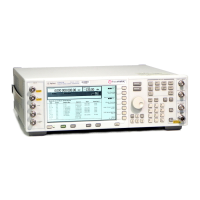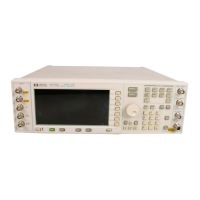452 Chapter 16
W-CDMA Uplink Digital Modulation for Receiver Test
Understanding the PRACH
Figure 16-4 Message Part Structure
The control part carries the pilot and TFCI (transport format combination indicator) bits. The pilot bits are
used by the base station to synchronize with the UE. The TFCI bits are used by the base station to determine
the data format being used by the transport channel. For example, this would let the base station know the
number of data blocks, the data block size, bit sequence, and number of CRC bits that are being used by the
transport channel. The TFCI pattern, relative to a transport channel configuration, is determined by the base
station network; it is not defined by the 3GPP standards. The 3GPP standards define only the number of
transmitted TFCI bit.
The data part contains only data bits and is the request information used for establishing a connection with
the base station.
Slot Formats
Slot formats are used to determine the transmitted frame structure such as the symbol rate, the number of
bits per frame, and the spread factor. Each slot format is defined in the 3GPP standards and implemented in
the ESG. The control part and data part each have their own slot formats and they are applied to the 15 slots
per 10 ms message part. The available slot formats are shown in Figure 16-5 and Figure 16-6.
If you are using the transport channel as the message part data type, you can inadvertently set values within
the transport channel that conflict with the current slot format. When this occurs, an error will be displayed
and you will need to either correct the transport channel values or select an appropriate data part slot format.
The control part only has one slot format, so its configuration is static, see Figure 16-5.

